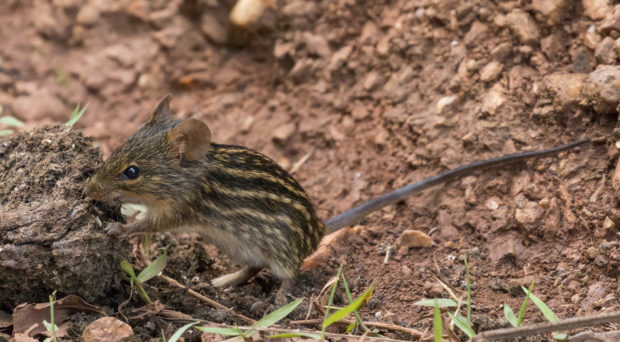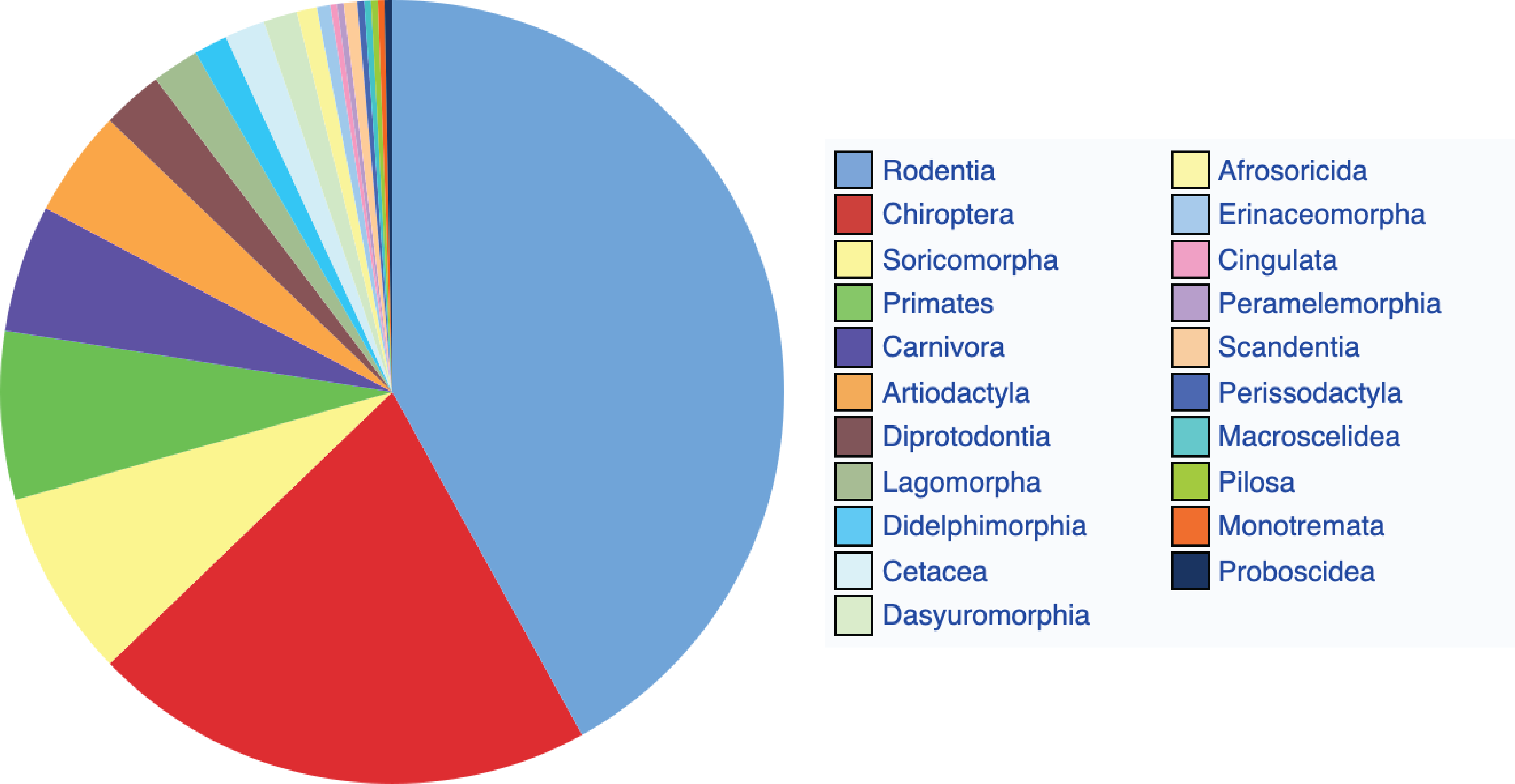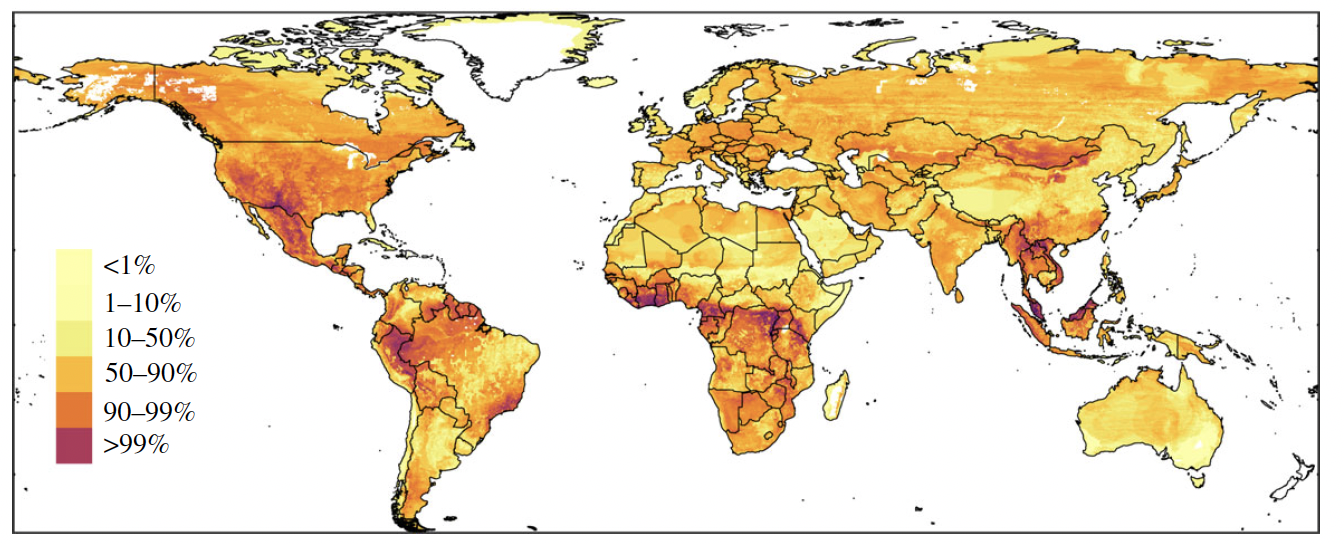
There are over 2000 species of rodents across the globe. They are the most diverse Order of mammals and occupy habitats in every continent except Antarctica. They are important herbivores and voracious seed predators. They provide food sources to many predators, but also provide ecosystem disservices through their role as pests of cropland. Additionally, rodents are important reservoirs of zoonotic diseases. Rodents carry a diversity of pathogens, including helminths, bacteria and viruses, which can infect humans and make them very ill. They are considered the most important hosts of infectious diseases and are responsible for more than 80 diseases – including plague, leptospirosis, and hemorrhagic fever with renal syndrome.

Rodents are commonly found in association with humans, and some species thrive in human modified environments. As we have discussed previously, land use change, including the modification of natural habitats into agricultural fields can increase risk of emerging zoonotic diseases. This can be through increased contact between humans and animals, changes in the host community, changes in the prevalence of pathogens in these reservoir populations, and other factors.
With growing human populations and ongoing land use change, how will the distribution of rodents and the pathogens they carry change in the coming years? A recent study set out to address this question by mapping which rodents are currently found in each land use and how changing landscapes will affect this distribution using different land-use scenarios. The main goal was to identify regions where zoonotic hazard from rodents is expected to increase and decrease.
Firstly, rodent zoonotic hazard was defined as a product of not only where particular species are, but also the expected prevalence of disease in that species. Research by other scientists have proposed methods to calculate equilibrium prevalence of pathogens in a rodent species given key life history traits. For example, species that have large litters, reproduce at a younger age, and have short generation times will likely have higher prevalence of a disease than a species with a ‘slower’ lifestyle. This hypothesis has been validated with empirical studies and provide a useful estimate for how ‘hazardous’ a species can be if it is present.
The second key determinant of hazard in this study is whether or not a species is present at a particular location. To address this, scientists used a database that catalogues where museum specimens were originally obtained. They used these locations and the dates of capture to assign a probability for that species within a given land use type. The land use types they focused on were divided into primary forest, managed pasture, and annual crops. They used classification and regression trees, and other machine learning methods, to identify the land use variables that were important for predicting each species presence and absence. The probability of a species in a given area was then multiplied by the estimated prevalence to quantify the hazard.
Next, the researchers had to predict how this rodent reservoir hazard would change in the future. They used three future scenarios developed by the Land-Use Harmonization (LUH2) project. The first scenario involves a sustainable development scenario that limits climate warming to a maximum of 2°C (best case), the second scenario modelled a world with closed borders and deepening inequality, and the last scenario was based on fossil fuel and trading, which would lead to the most severe impacts for climate warming. These scenarios represent a range of possible changes in human population growth and land use change.
So where are rodent zoonotic hazards currently the highest? Areas where there is high diversity of rodent species, including Southeast China, tropical Africa, and South-Central USA currently have high risk for rodent zoonoses. There were also areas where rodent species were particularly likely to have high prevalence that were highlighted as rodent zoonoses hotspots – including Mongolia, Eastern Europe, and southern Argentina.

Each of the land use change scenarios affected the hazard predicted from rodents – but varied in the magnitude, direction and locations of where these changes were seen. In the most sustainable scenario, many hotspots had a clear reduction in hazard. Some hotspots had a more heterogenous response – with some areas increasing and others decreasing in hazards (e.g. southeast Brazil and southeast China). In both of the other scenarios, higher risk was seen in many areas. In the second scenario, hazard decreased in the USA, but increased across most other countries in the Americas. South Africa significantly increased its hazard as well. In the final, fossil fuel dependent scenario, increases in hazard were seen across the globe. While some areas did have decreases, such as Africa, Southeast Asia, and other areas in North America, Russia, and China increased their rodent hazards. These scenarios all describe geographic risk. Future work could include human population predictions to determine if there are net changes in the number of individuals at risk.
The difference in risk across the globe and with different scenarios reflects rodent community responses to different land uses. For example, the abundance of New World hantavirus reservoirs is higher in natural vegetation, whereas in other regions zoonotic rodent reservoirs are more abundant in human modified environments. This emphasizes the importance of understanding the ecology of rodent communities in order to mitigate risk in each region.
This study highlights important hotspots of rodent zoonoses but also highlights the future of rodent zoonoses. Importantly, it highlights that in almost all land use scenarios, low-income countries are most vulnerable to rodent zoonoses and will be most burdened by these diseases. More research and effort to develop solutions to prevent risk of rodent-bourne zoonoses in a changing world is definitely needed.

Comments